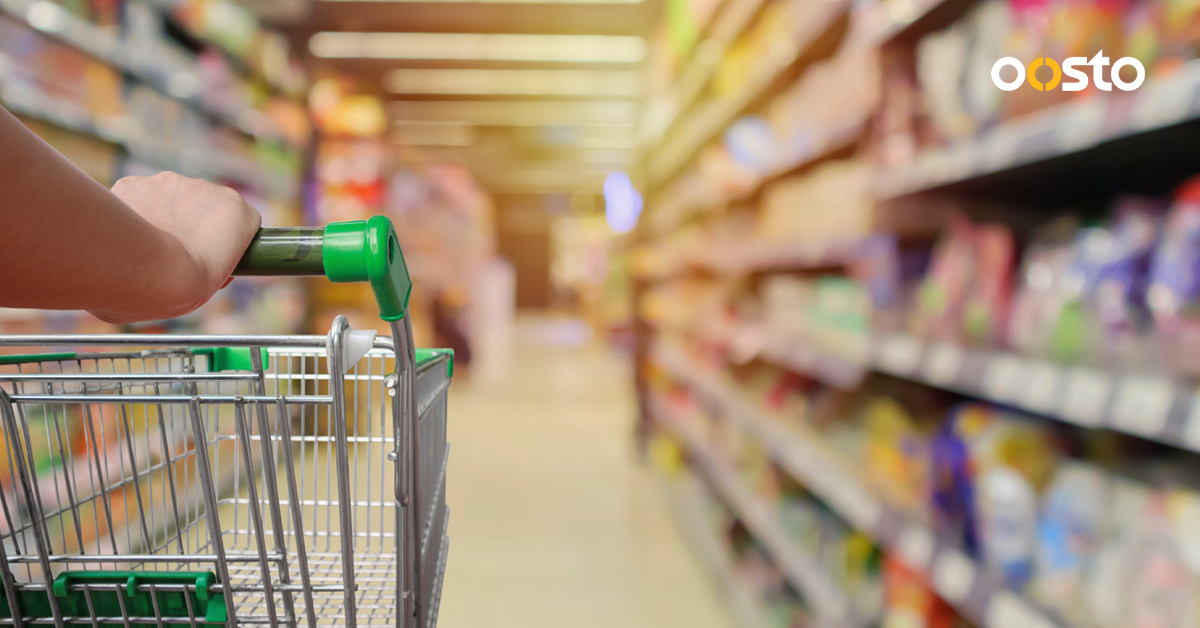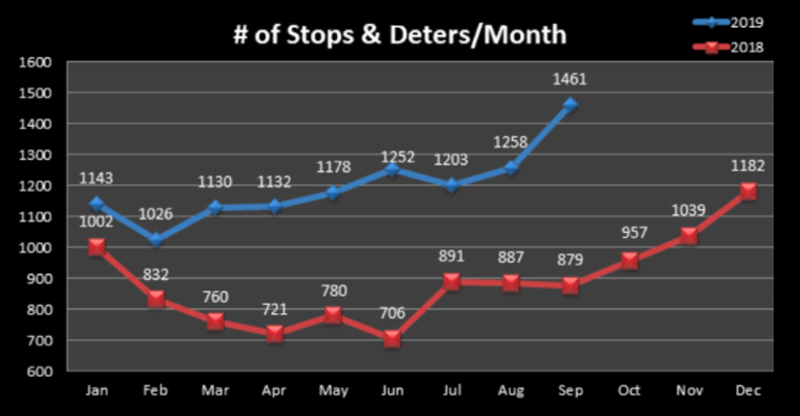
Introduction
It’s no secret that the COVID-19 pandemic hit the physical retail industry hard—a record 12,200 stores closed in 2020—but the market has rebounded, and then some.
The most recent U.S. Department of Commerce Report showed a 16.3% year-over-year rise in retail sales and companies are hiring at a record pace. As the pandemic wanes, “Americans overall are flush with cash and eager to spend it as the economy reopens.”
But while the current state of retail looks rosy, a familiar thorn has crept back up: crime.
Since the start of the pandemic, “shoplifting is up markedly” across the U.S., with roughly 70% of retailers reporting an increase in shrink over the past year. In NYC, alone, there have been 26,385 complaints of retail theft this year—the most since 1995 and a 32% year-over-year spike.
This rise in shoplifting is a global phenomenon: In Vancouver, Canada, police saw a 260% rise in shoplifting incidents involving weapons; in Christchurch, New Zealand, police forces have noted a significant rise in retail theft; and in London, England, the total cost of retail-related crime increased 14% year over year.
Experts believe that organized shoplifting is largely the driving force behind this rise in retail crime: The Home Depot cited an 86% increase of investigations into organized retail crime networks since 2016, and they also claim that these rings have become “increasingly brazen and violent.” The Coalition of Law Enforcement and Retail estimates that organized retail theft now accounts for ~$45 billion in annual losses for retailers today, up from $30 billion a decade ago.
In total, inventory losses from shoplifting make up 2% of all gross retail sales annually, and unfortunately, only 1 in 48 shoplifters are caught, and less than 10% of stolen goods are recovered.
With this stark rise in retail crime, organizations have turned to brute-force methods to curb their instances. These methods include shortening operating hours, stationing security professionals onsite, and physically locking items behind cases.
These measures don’t help you create a warm, inviting shopping experience, to say the least. And as the crime statistics show, they’re not exactly effective.
But what if there were another way to combat these threats?
This is where facial recognition—used in an ethical manner—can greatly help reduce theft, dramatically increase the number of successful apprehensions and merchandise recoveries, and improve the customer experience for your law-abiding customers.
Proactive Alerts
In virtually every security setting—retail, included—the goal is to prevent incidents before they occur. This is an area where video surveillance with watchlist alerting systems thrive.
Here’s a high-level overview of what an automatic watchlist alerting workflow—powered by facial recognition—looks like:
1. Your team uploads a list of known offenders (e.g., historical shoplifters), including their pictures and names–to Oosto’s OnWatch software.
2. If any of these persons of interest (POIs) enter your store, your video surveillance cameras will capture their image which will then automatically trigger a detection (even if a POI is not looking directly at the camera and they’re wearing a mask).
3. Your onsite security or customer service team receives an immediate alert on their mobile phone via email or mobile app. The alert contains:
- The individual’s name
- The individual’s reference image
- The individual’s detection image
- A timestamp of the recognition
- The location of the camera where the individual was recognized
4. A security or service team member takes the appropriate action based on your store’s standard operating procedures and security protocols.
Aside from the workflow, which will vary from store to store, there are a couple of other things you should know. It’s ultimately up to the retailer to build their own bespoke watchlist. While we can offer guidance—and put you in touch with local law enforcement to help build your list—Oosto does not, and will not, provide these lists. Secondly, individuals who are detected and added to a watchlist at one store can easily be uploaded and shared across other stores, so that their images trigger alerts whenever they enter any of your sites. Thus, your watchlist can work across all of your stores, no matter where they’re located.
This alerting system can be used for VIP shoppers, as well. Simply upload a list of their images and assign them to a VIP group, rather than a shoplifting group, in OnWatch. The subsequent workflow is the exact same, but instead of security professionals intercepting these POIs, a member of your Customer Services team may wish them a warm welcome.
The renowned Pareto principle claims that 80% of your store’s profits probably come from 20% of your most loyal shoppers. Imagine how special your most loyal customers would feel if, every time they walked into your store, they were greeted by name, and perhaps even offered a drink or snack?
Retroactive Investigations
Sadly, not all shoplifting incidents, even at stores that employ our Vision AI, can be prevented. However, our forensics features, powered by our facial and body recognition technology, can be used to identify and investigate individuals who have already stolen from your premises and make sure they’re added to your watchlist (if they decide to visit one of your stores in the future).
Let’s say that a man sprints out of your store without paying. A store associate contacts your surveillance team and informs them that the man was wearing a blue shirt and white pants.
Here are the steps that your surveillance operator can now take:
- Search our system for anyone wearing a blue shirt and white pants in the past hour. This greatly decreases investigation time, as they can narrow down results by body features rather than search through the images of each customer who has entered the store.
- Work with the store associate to identify the man from his facial image.
- Add the man’s facial image into Oosto’s “search by track” feature to find each and every instance this individual was picked up by one of your IP cameras.
- Watch the video playbacks of this man’s detections to determine exactly what merchandise was stolen from your store. This greatly decreases the burden on inventory management teams.
- Securely share video playbacks with local law enforcement to help recover lost merchandise. Our built-in privacy features allow you to share these videos without compromising the identity of anyone else picked up by your IP cameras.
- Add this man to your watchlist so that you’ll get automatic alerts whenever he re-enters any of your store locations.
Results
The proof is in the pudding. Check out some of these recent highlights from our customers:
- A large U.S. retail chain increased its number of apprehensions by 77% year-over-year after just one month.
- A different U.S. retailer recovered twice as much stolen merchandise through our solution in just one year.
- A European-based retailer apprehended 54% more potential threats through our solution. In the chart below, see the number of apprehensions by the blue line (after our system was installed) compared to the red line (before our system was installed).

Importantly, this was all done without compromising the shopping experiences of retailers’ loyal, law-abiding customers through methods like reducing store hours or locking up inventory. Costs are also saved for the retailer, as Oosto’s solution eliminates the need to hire additional security personnel. In fact, our product has been shown to have a positive ROI in less than one year of use.
Conclusion
As the retail industry has rebounded to pre-pandemic levels and beyond, criminal activity has increased substantially.
Oosto’s facial recognition technology is extremely effective at preventing theft preemptively and even in helping to recover stolen merchandise. It’s also cost-effective, because the platform works with your existing camera and IT infrastructure while reducing operational costs and eliminating the need for additional security personnel.
We know there may be some trepidation when it comes to using facial recognition–that’s why I encourage you to check out my next blog post where I will address some popular misconceptions about the technologies and propose some best practices to ensure that your store employs facial recognition technology in a responsible and ethical manner.
While traditional anti-theft methods, such as reducing store hours, moving items behind locked boxes, or hiring additional security staff, are both cumbersome to law-abiding customers and costly to retailers, utilizing facial recognition technology is a great way to combat these rising threats.
 Vision Al Blog
Vision Al Blog


